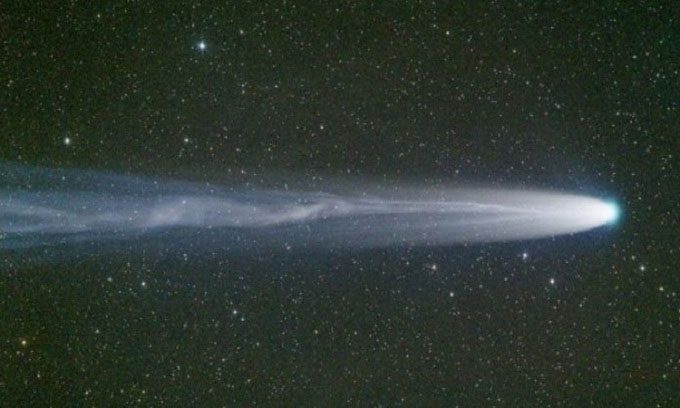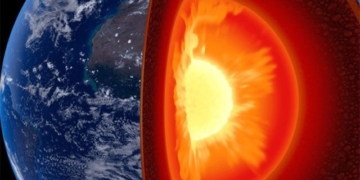Images from telescopes show that Comet Leonard (C/2021 A1) has broken into several pieces as it passed by the Sun.

Comet Leonard in a photo taken on December 28, 2021. (Photo: Michael Mattiazzo)
Comet Leonard made its closest approach to the Sun at perihelion on January 3, 2022, and is now moving away from the Sun. It is not only fading but also missing its two most important components: the nucleus and the coma. The remnants of the comet can be observed in the morning sky from the Southern Hemisphere.
Researcher Gregory Leonard from the Catalina Sky Survey in Tucson, Arizona, discovered the comet on January 3, 2021. At that time, it was still far from perihelion. Leonard gradually traversed the Earth’s orbit around the Sun and then towards Venus. Initial observations indicated that Comet Leonard was bright enough to be seen with the naked eye. By the end of 2021, Comet Leonard was at its closest point to Earth.
A comet typically heats up as it approaches the Sun. Its nucleus, only a few kilometers wide, warms up, releasing volatile materials from its surface, which consist of gas and dust. The material that rises from the nucleus forms an atmosphere around it called the coma.
By late November of last year, Comet Leonard became brighter. As it approached perihelion on January 3, 2022, its brightness began to fluctuate every 3 to 5 days. The comet’s tail exhibited a complex structure, possibly due to debris breaking off from the nucleus. At this time, astronomers found it very challenging to observe the comet. However, they continued to monitor it as it faded.
On February 23, 2022, researcher Martin Masek captured images of the comet and noted that it lacked the dense nucleus at its center. Other observers confirmed that Comet Leonard was now just a faint streak. It is likely that its 1.6 km wide nucleus had either broken apart or evaporated.


















































